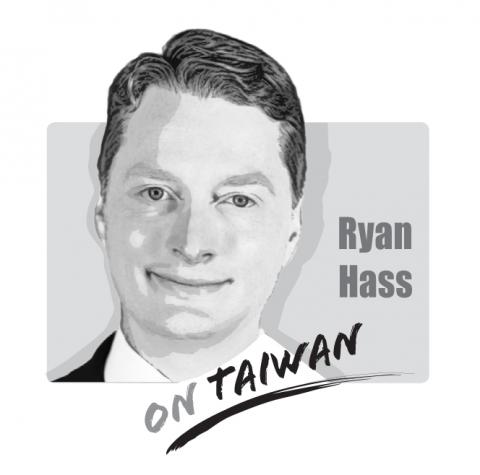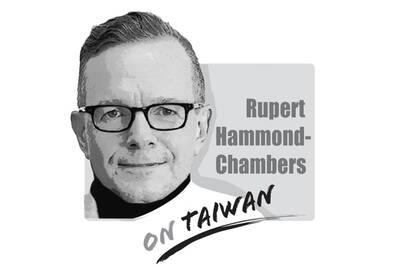The historic summit between President Donald Trump and North Korean leader Kim Jong-un in Singapore June 12 lowered risk of another Korean War, leading many in the United States and in Asia to release a collective sigh of relief. Even a reduction in risk on the Korean Peninsula, though, does not significantly reduce the external challenges confronting Taiwan. The game board of strategic competition in Asia is shifting.
The first major shift is the discontinuity in American foreign policy. As my Brookings colleague Bob Kagan recently argued, United States foreign policy under President Trump is departing from the bipartisan approach that Washington had pursued since the end of World War II. President Trump is now implementing ideas he has nurtured for over 30 years and that he championed during the 2016 election. These include his beliefs that free trade has enabled countries to take advantage of the United States and that allies and security partners too often free-ride on America’s generosity.
As the breakdown at the June G7 meeting in Canada highlighted, President Trump is not interested in continuing the implicit bargain between the United States and its partners whereby the United States provides security and market access as a price for supporting allies’ progress. To President Trump and many of his supporters, such a bargain is not a bargain at all, but rather an unfair imposition on Americans to protect and promote the prosperity of others at the expense of the United States. To remedy the situation and put “America first,” President Trump has signaled his determination to reduce America’s overseas entanglements, push back the tides of globalization, promote more reciprocal access for trade and investment, and strengthen America’s borders.

For President Trump, American strength is measured largely by the size of its economy and the power of its military, not by the attraction of America’s ideals or by its ability to summon collective action in confronting common challenges. Trump seems unapologetic in his belief that there are no permanent allies or adversaries, but rather an ever-shifting constellation of relationships depending upon circumstances.
Meanwhile, Beijing has grown both more aggressive in applying pressure on Taiwan, and more sensitive to efforts by Washington to show its support for Taiwan. Beijing has increased PLA military operations around Taiwan, intensified efforts to penetrate Taiwan’s political system through cyber and other means, expanded efforts to shrink Taiwan’s international space, elevated Taiwan as an issue in the US-China relationship, and become more brazen in seeking to compel countries and companies to accept Beijing’s interpretation of Taiwan’s status, including in the nomenclature they use to refer to Taiwan.
Viewing Beijing’s expanding pressure on Taiwan as needing to be checked, the White House recently chose to push back on Beijing’s demand that overseas airlines refer to Taiwan as a part of China in their drop-down menus on their Web sites. The White House described such demands as “Orwellian nonsense.” While many in Washington cheered the move as an overdue corrective to Beijing’s increasing overreach, some in Beijing misrepresented the US position by interpreting the White House’s reaction as picking at President Richard Nixon’s acknowledgment in the 1972 Shanghai Communique that there is but one China and Taiwan is a part of China. Some in Beijing also viewed the Taiwan Travel Act in a similar light, interpreting it as a step by Washington to blur the unofficial nature of relations between the people of the United States and Taiwan, and instead give the relationship a greater resemblance to state-to-state relations.
To be clear, neither Washington nor Taipei have conducted their unofficial relations with each other in recent months in ways that deviate from longstanding practice. President Trump and members of his administration have reaffirmed the United States commitment to the “one China policy” based on the Taiwan Relations Act and the three US-PRC joint communiques. And President Tsai Ing-wen (蔡英文) has been steadfastly committed to maintaining the cross-strait status quo, even at the expense of frustrating some of her supporters, who have criticized her reluctance to push back more firmly against pressure from the mainland.
The key point is that Beijing is becoming both more touchy and more assertive toward Taiwan at the same time as the United States is putting “America first” in its pursuit of foreign policy objectives. “America first” does not mean Taiwan alone. Taiwan still enjoys deep support throughout the United States government and on a bipartisan basis in the Congress. But it does mean that Taiwan’s strategic environment is evolving, and that Taiwan will need to remain proactive. Taiwan does not have the luxury of being able to be inwardly focused or inattentive to the concerns of its closest friends, including the United States. Rather, Taiwan needs to operate with a sense of urgency. The more Taiwan can strengthen its ability to defend itself; deepen its relations with like-minded partners; show its unwavering willingness to meet Beijing halfway in managing cross-strait relations; unlock the talents of its people; and improve its ability to attract capital, talent, and technology from around the world, the better Taiwan will be able to navigate the shifting strategic currents to position itself for the future.
Ryan Hass is a David M. Rubenstein Fellow in the Foreign Policy program at Brookings, where he holds a joint appointment to the John L. Thornton China Center and the Center for East Asia Policy Studies.
The gutting of Voice of America (VOA) and Radio Free Asia (RFA) by US President Donald Trump’s administration poses a serious threat to the global voice of freedom, particularly for those living under authoritarian regimes such as China. The US — hailed as the model of liberal democracy — has the moral responsibility to uphold the values it champions. In undermining these institutions, the US risks diminishing its “soft power,” a pivotal pillar of its global influence. VOA Tibetan and RFA Tibetan played an enormous role in promoting the strong image of the US in and outside Tibet. On VOA Tibetan,
Former minister of culture Lung Ying-tai (龍應台) has long wielded influence through the power of words. Her articles once served as a moral compass for a society in transition. However, as her April 1 guest article in the New York Times, “The Clock Is Ticking for Taiwan,” makes all too clear, even celebrated prose can mislead when romanticism clouds political judgement. Lung crafts a narrative that is less an analysis of Taiwan’s geopolitical reality than an exercise in wistful nostalgia. As political scientists and international relations academics, we believe it is crucial to correct the misconceptions embedded in her article,
Sung Chien-liang (宋建樑), the leader of the Chinese Nationalist Party’s (KMT) efforts to recall Democratic Progressive Party (DPP) Legislator Lee Kun-cheng (李坤城), caused a national outrage and drew diplomatic condemnation on Tuesday after he arrived at the New Taipei City District Prosecutors’ Office dressed in a Nazi uniform. Sung performed a Nazi salute and carried a copy of Adolf Hitler’s Mein Kampf as he arrived to be questioned over allegations of signature forgery in the recall petition. The KMT’s response to the incident has shown a striking lack of contrition and decency. Rather than apologizing and distancing itself from Sung’s actions,

US President Trump weighed into the state of America’s semiconductor manufacturing when he declared, “They [Taiwan] stole it from us. They took it from us, and I don’t blame them. I give them credit.” At a prior White House event President Trump hosted TSMC chairman C.C. Wei (魏哲家), head of the world’s largest and most advanced chip manufacturer, to announce a commitment to invest US$100 billion in America. The president then shifted his previously critical rhetoric on Taiwan and put off tariffs on its chips. Now we learn that the Trump Administration is conducting a “trade investigation” on semiconductors which